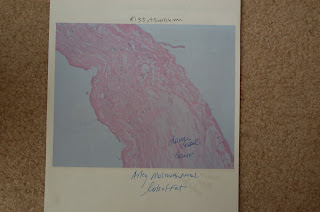Here is more O-CHEM topics for DAT takers:make sure you are confortable with all the functional groups:AlcoholsTheir properties: Acidity,boiling point and solubility
Their preprations: a. From RX, ROTos, ROAc b. Reduction from aldehyde and ketones with NaBH4 and LiAlH4. c. Gringard reaction: (Mg in Et2O) RMgBr or RMgCl
Reaction of Alcohols
a. reaction with a base and a metal
b. Dehydration with H2SO4
c. converstion to a good leaving group and substition reactions. ( with HBr, SOCl2, PBr3, p-TosCl and MsCl)
d. Oxidation with PCC and Na2Cr2O7 or CrO3 (in acid or H2SO4)
Primary ROH into COOH with Na2Cr2O7
Primary ROH into aldehyde with PCC
Secondary ROH into ketone with Na2Cr2O7 or PCC
Tertiary ROH: NO REACTION
Carbocation rearrangment: hydride and alkyl shift.
Ethers:properties
prepration from Ethers: Willamson synthesis for ethers
Reaction of Ethers with acids
Reaction of Epoxides with acids, with bases and with gringard reagent.
Alkene:Nomenclature: E/Z, Cis/Trans
Degree of unsaturation
stability of alkenes: more subsitued, more stable
Hydrohalogenation (mechanism): follow Markovnikov's rule (electrophilic addition on double bonds: addition on more substituded carbon the alkene)
***Stability of the carbocation
***Rearrangment
Halogenation
Halohydrin
Hydration
Oxidation
Cyclopropene formation
Epoxide formation
Polymerization Reactions.
Alkanes:Hyperconjugation
Free radical chain mechanism
Determination of estimated yields from relative reactivity of different C-H bonds
Make sure you pay very close attention to SN2, SN1, E2 and E1 MechanimsStereoisomers:Chiral center, chirality center, chiral carbon, stereocenter
Optically-active compounds: dextrorotatory (D,+) and Levorotatory (L,-)
Specific Rotation [alpha] ( in degrees)
Enatiomers, mirror images: drawing structure
Diastereomer
Meso Compound
Absolute configuration: R,S
Racemic mixture or racemates
Stereochemistry in free radical reactions.
For more topics, Refer to ORGANIC CHEMISTRY by Vollhardt & Schore"STRUCTURE AND FUNCTION" 5th edition
Dont forget the to look at H & C NMR, IR and mass spectroscopy. Also study Benzene in detail because you will find that your synthesis problems start with that.


























